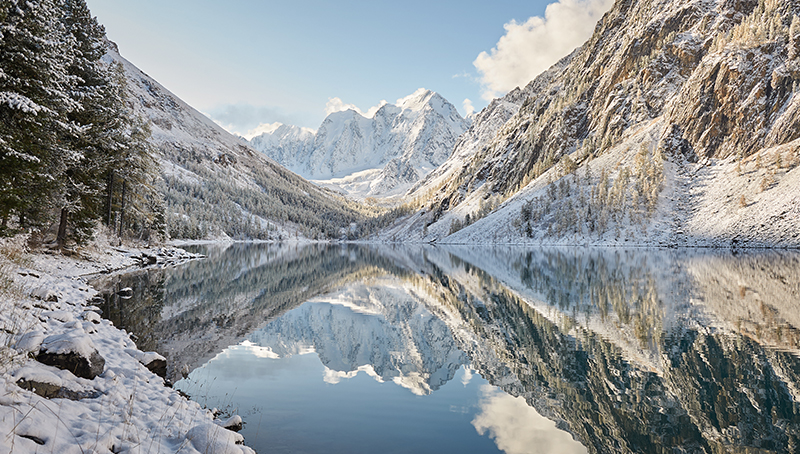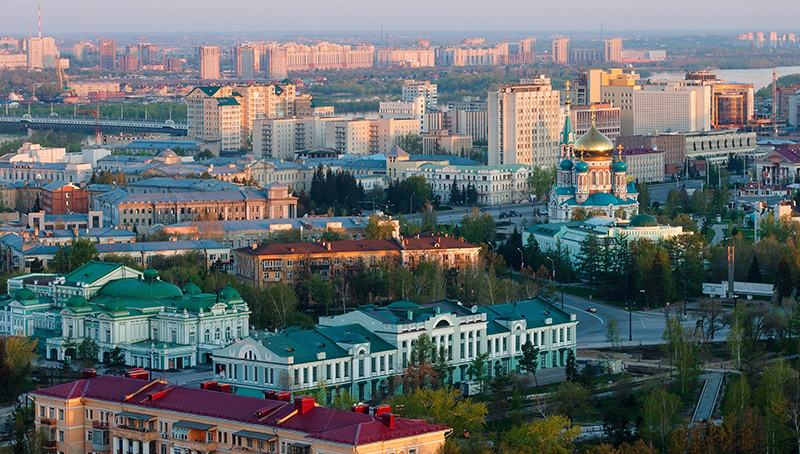The planet of Unitile. Siberia continent.
On the most distant macro-region of Unitile — according to the sales manager Sergey Khromov.

It is not just a point on a map
It is enough to list the regions and republics that are part of the macroregion to understand that this is by no means a point, not only on the map but also on the globe of planet Earth: Republic of Altai, Tyva, Khakassia, Sakha (Yakutia), Buryatia; Altai, Krasnoyarsk, Primorsk, Kamchatka, Khabarovsk, and Zabaykalye Territories; Jewish and Chukotka Autonomous Areas; Kemerovo, Novosibirsk, Omsk, Tomsk, Sakhalin, Amur, Magadan, Irkutsk regions.
And these incredible spaces are under full control of 52 people working in four offices — Novosibirsk, Krasnoyarsk, Irkutsk, and Vladivostok.
The area of Siberia is 9 million 734.3 thousand km². For comparison, 15 France can fit into this territory. At the same time, the population of Siberia is only about 24 million people.

Harsh land...
65% of Russia's territory is occupied by permafrost, and it has the widest distribution in Eastern Siberia and Transbaikalia. The greatest depth of freezing was recorded in Yakutia, on the Vilyui River. This depth is 1,370 m. It is permafrost that allows open-pit mining of diamonds in the kimberlite pipes of Yakutia because there is no risk of pit wall collapse.
"Freezing, I see the sun setting behind the seas, and no one around" ... It may seem that Brodsky wrote these words about Siberia. Because there are long, harsh winters here. And even the cold pole is also here. At the same time, Siberia has the lowest population density.
Huge distances between towns and villages and not the best transport infrastructure. And the roads are often blocked here. For example, when it is extremely cold and the probability of getting from point A to point B is negligible. However, Russians are not afraid of obstacles, so for the most desperate and brave the duty stations of rescuers are arranged along the roads.

… Mysterious
Siberia is full of mysteries and secrets. For example, where the Tunguska meteorite fell, neither a crater nor a meteorite was found. And no one knows what it really was. Although the phenomenon itself was seen by eyewitnesses and recorded by devices around the world.
In the heart of the Arctic forests of Siberia, there is a huge crater, called by locals "the gateway to the Underworld." Its size is one kilometer in length and one hundred meters in depth. They named it in honor of the nearby Batagayka River.
On the border of the North and Kara Seas, there is the unique sacred Island of Vaigach. Nobody has lived here for centuries, and now there is only one village on the island, but at the same time there were sanctuaries of successive peoples of the North: Siiyartya, Pechers, Yugrs, Samoyadi (Nenets).

… And cheerful
Modern Siberia is not a forgotten bear corner, the land of exiles and convicts, but the largest cultural, scientific, industrial and transport region. To understand this, it is enough just to list the towns known to everyone in any part of Russia: Novosibirsk, Krasnoyarsk, Tomsk, Omsk, Vladivostok.
But very few people know that there is a wonderful village and a ski resort in all respects, Sheregesh. Every year in April the Hot-Water Bottle Fest is held in Sheregesh. Since in April the air temperature already reaches 17-25 degrees, most festival participants prefer skating in swimsuits, including mass descent in the bikini.
And yes, Siberians have a good sense of humor. For example, in 1854, Fyodor Mikhailovich Dostoevsky was not complimentary about Omsk: "Terrible town. It has almost no trees. In summer - heat, and wind with sand, in winter - a snowstorm. I saw no nature. The town is dirty, military and greatly depraved." A hundred years later, in 1948, a massive greening of the city began. By 1967, it turned into a real garden city. And at the beginning of the XXI century, the government of the Omsk Region named the Omsk State University after Dostoevsky.

Gracai Ceramica is everywhere...
There is a legend that in some remote locations, which can only be reached by helicopter, good travelers saw the Unitile products. However, Sergey Khromov does not believe in these legends: "If only by helicopter, then we are talking about reindeer farms where tiles are basically not needed."
But the sales manager confirms that the arrangement of supplies in the region is one of the most difficult tasks:
— "For example, Norilsk, in the north of the Krasnoyarsk Territory. Products can be shipped here via Murmansk along the Northern Sea Route. But the main, you can say almost the only traffic artery, is the waterway along the Yenisei, which is available from April till September. Products to such regions as Sakhalin, Kamchatka, Yakutia are delivered for a very long time. Delivery is carried out by ferry and can be delayed for two months: unloading, long line, loading. The fact that our products in this region are more expansive than in others is explained by complex logistics and large distances. However, this concerns not only our products but also the products of our competitors.

Unitile in the North
But neither the harsh climate nor the difficulties of logistics hinder the victorious parade of the Unitile products in the region:
— "Of course, here we can see all brands and manufacturers. Even exotic ones like those of Indonesia and Vietnam. Previously, there was a lot of Chinese products, but the weakening of the ruble virtually forced the Chinese products out of the market. It's an illusion that Chinese tiles are made for three kopecks by small hands of orphans and burned in stone ovens on charcoal. In fact, China is the largest producer of porcelain tiles in the world. What's more, it is high-quality, and therefore not cheap in US dollar equivalent. Suffice it to say that they produce large custom tiles costing 5-7 thousand rubles per square meter. But in very limited quantities.
So today the main competition in the region is between Russian producers, and the good news is that we are among the undoubted leaders."
Calm practicality
Each region has its own taste preferences. And Siberia is not an exception. However, Buryatia stands apart because its residents prefer bright colors. In other places, consumers choose soothing warm colors. They are as calm and practical as the Siberians themselves:
— "Сold colors, especially blue, are not popular. Maybe because we have a sharply continental climate, in winter it's very cold, in summer it's hot. So, the surrounding world gives us a plenty of winter and summer colors. And at home... At home, we want some kind of parity between extremes. Something neutral and cozy. Such collections as Rotterdam, Itaka, Kamelia are very popular. A great interest in the region was brought by new products of 2017. Including developers of large facilities.
Actually, Gracia Ceramica is gaining increasing popularity, and an increasing number of distributors want to participate in its promotion. There is a Gracia department with a touch-screen and 3D visualization glasses 1,100 km away from Irkutsk in Chita. You won't see this in every town."
